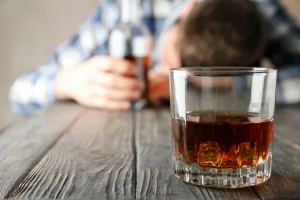
Within a few seconds after ingestion, alcohol reaches the liver, which begins to break it down, or metabolize it. Any BAC measurement therefore reflects not only a person’s drinking rate but also his or her rate of metabolism. The key stakeholders for reducing drink–driving accidents are the police; they are responsible for enforcing drink–driving laws and for generally stepping up drink–driving countermeasures.
Drug-impaired driving fact sheet
In contrast, only 13 percent of deaths among motorists in large trucks were alcohol related (87/684) (NHTSA 2003a). According to the US Department of Transportation, nearly 4 million American adults committed an estimated 112 million drunk-driving incidents in 2010 alone. Despite the high volume of drunk driving episodes, only a small percentage of impaired drivers are arrested. There’s no question that drunk driving is a major public health problem in the United States. In 2014, nearly one-third of the nation’s 32,675 traffic fatalities were alcohol-related. NHTSA demonstrates its commitment to eliminating drunk driving through research, public awareness campaigns, and state safety grant programs.
- This BAC is above the legal limit for driving of 0.05%, enforced in most countries around the world (World Health Organization et al. 2018), although in some countries, such as England and parts of the USA, a legal limit of 0.08% is enforced.
- However, the effects of alcohol on an individual can vary depending on several factors.
- Alcohol consumption can hinder our decision-making abilities and our overall judgement on the road.
The Effects of Alcohol on Your Driving Skills and Judgement

A study in Western Australia19 found that more alcohol-impaired drivers originated from drinking establishments selling more beer, including high alcohol content beer, and distilled spirits (Gruenewald et al., 1999). Beverage availability in on- and off-premises drinking establishments is an important consideration for alcohol pricing and taxation, which is discussed in Chapter 3. In another study that examined BRFSS data from 2003 and 2004, drinking drivers who drank most of their alcohol in licensed establishments consumed an average of 8.1 alcoholic beverages on one occasion, and about one-fourth of this group consumed 10 or more drinks (Naimi et al., 2009).

Impaired Driving
Like impaired judgment, impaired focus and the inability to pay attention are among alcohol’s earliest effects. Blood alcohol concentrations as low as 0.02% have been shown to limit a person’s ability to consistently focus on a single task or manage various small tasks in succession. Alcohol will quickly make you less aware of objects and events in your immediate environment – which would be incredibly dangerous on a busy roadway. With driving, there are many things that require your undivided concentration such as staying in your lane, your speed, other cars on the road and traffic signals. Your attention span is dramatically reduced with drinking, which significantly increases the chance of an accident. In a small study that interviewed 72 young adults across Montana about reasons for drinking and driving, participants cite a lack of transportation options (9).


Because connections between the prefrontal cortex and the ventral striatum are still maturing, alcohol can affect those connections. As a result, teens may do impulsive things, such as drinking and driving or having unprotected sex. This will be very dangerous because they may not even know they are impaired and will continue to drive thinking everything is fine. When driving impaired, the driver may take reckless decisions they may not normally make such as driving too quickly or making frequent lane changes.
Study on the go, download our FREE app
Driving under the influence of alcohol, or drink-driving, is a key risk factor for 27% of all road injuries. Thus, drink-driving is a significant public health problem that affects not only the alcohol user but also, in many cases, innocent parties such as passengers and pedestrians. Even at low blood-alcohol levels, drivers experience problems with concentration, coordination and identification of risks in the road environment. In addition, at a given blood-alcohol level, drink–driving crashes can be more severe or more common when high speed or poor road design are involved. Drink- driving laws and BAC limits have been assessed as effective interventions for NCD prevention. Distracted driving occurs when drivers divert their attention from the driving task to another activity (e.g., texting, eating, talking to other passengers, or adjusting radio or climate controls).
- Further, the higher the BAC of drivers in fatal crashes, the greater their likelihood of a prior conviction (NHTSA 2003a).
- Although SDLP is sensitive to the effects of alcohol, lane-keeping performance does not encompass other higher-order demands in driving, such as route-finding and interactions with other traffic.
- You may experience blurred vision, delayed reactions, and poor hand-eye coordination, which can result in a dangerous situation on the road.
Inhibit Judgment
Driving requires continuous attentiveness to dozens of different tasks, like scanning the roadway ahead, checking your mirrors, monitoring your speed, signaling, shifting gears and managing the space around your vehicle, each of which are vital to your safety. Alternating your focus between these actions can be a serious mental strain, even when you’re sober! If alcohol has hindered your ability to focus to any degree, some essential task will eventually slip through the net. This will include predicting the behavior of other drivers, and the outcome of hazardous situations.
Standard Drinks

Even at lower BAC levels, alcohol can impair judgment, reaction time, and spatial awareness. In reality, a person’s driving ability can become impaired with just a single drink. As you can see from these results, many of the drivers consequences of driving drunk include: assessed during this study experienced quite a severe decline in driving ability with a BAC as low as 0.02%. It is also worth noting that the blood alcohol concentrations analyzed here are all below the legal limit of 0.08%.
- Alcohol-impaired drivers are more likely to drive at higher speeds and to be involved in motor vehicle crashes at excessive speeds, as impairment diminishes sensory motor function and increases (i.e., delays) reaction time.
- Its practices and innovations in product development, pricing, promotion, and making its products physically available essentially structure the context of drinking for Americans.
- Often, individuals charged with a DUI are also required to install an ignition interlock device at their own expense.
- In the United States, blood alcohol measurements are based on the amount of alcohol, by weight, in a set volume of blood.

